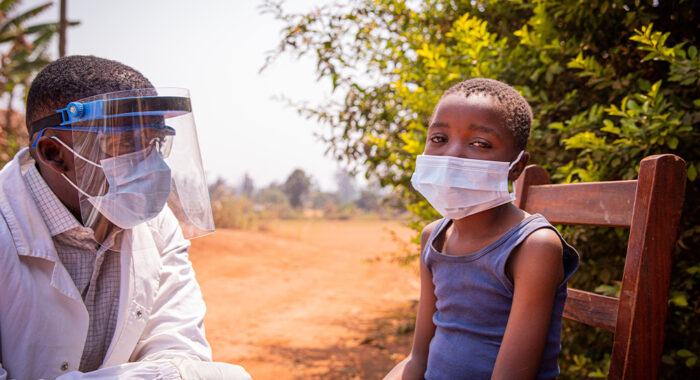Cora’s aunt would not take her to the hospital and left her lying in pain for three days while she was trying to give birth. The baby was stillborn, and Cora was left paralyzed from the waist down. Finally, Cora was taken to live with other relatives, who dropped her at a local women’s clinic. She had reparative surgery, but she still could not walk. Soon after her recovery from surgery, Cora returned to her family, but they continued to neglect her needs.
World Hope International, affiliated with The Wesleyan Church, heard about Cora and brought her to Sierra Leone Anti-trafficking Shelter. Through stretching and exercising Cora’s limbs, they worked to reverse her condition. One month after Cora entered the World Hope International shelter, she took her first step. Though Cora’s name has been changed for her protection, both she and her story are real, and represent reality for millions who are forced into labor and sex slavery and are treated as though they were created to be used.
More than Sex
Sadly, Cora’s situation is all too common around the world and in the United States. Many like Cora are trafficked as children and by their own family members. Yet human trafficking happens in many different contexts, and trafficked victims are often nearer than we think. The ways in which Christians can penetrate this great darkness are as unlimited as the gifts and talents God gives.
One victim was trafficked from Southeast Asia to the United States after being promised a great job opportunity. After his rescue, his hope and faith were gone. That’s when he was connected with World Relief’s victim services. When he met with the staff of World Relief, the NAE’s humanitarian arm, he felt safe and happy for the first time in years. “They helped me with my sadness and suffering. I was so happy and relieved. I couldn’t stop crying,” he said.
World Relief also assisted him in practical ways and steered him toward a local church. He now meets regularly with church leaders to discuss the Bible and receive emotional support. “My life is very short. I want to live my life to give to someone else who might need help,” he said.
Church Partnerships
Amy Hewat, World Relief’s U.S. Anti-trafficking Specialist, is seeing a continued increase in awareness and level of engagement in anti-human trafficking efforts among American evangelicals. Two years ago, most churches were just beginning to hear about the issue and were surprised to learn that human trafficking occurs in the United States. Today, the average church member has heard about the issue, and is pursuing a deeper knowledge base, while seeking tools to help identify victims, prevent trafficking and actively mobilize on behalf of this vulnerable population.
In addition to financially supporting ministries like World Hope International, World Relief and The Salvation Army, churches are taking the next step and actively partnering with the organizations, other local churches and even law enforcement. These partnerships help address victim needs holistically.
One church in Florida recently served as a safe location for officers to bring newly rescued victims following a raid. Church members met days in advance to pray and plan. Backpacks brimmed with toiletries, and culturally appropriate snacks were available. A World Relief staff person stood off to the side quietly singing a hymn. One of the victims asked if she could sing louder. As she lifted her voice, the chorus grew. An entire group of frightened men and women lifted up their voices, finding comfort in the worship of a loving God.
By meeting practical needs and providing spiritual support, Christians are helping the most vulnerable find hope in the One who created them and in whose image they were made.
The Salvation Army, World Hope International and World Relief are members of the Faith Alliance Against Slavery and Trafficking (FAAST). Launched in 2003, FAAST is a group of Christian organizations that collaborates to design programs, curriculum and training to prevent trafficking and help survivors to rebuild their lives.
This article originally appeared in the NAE Insight.



 View All Articles
View All Articles 











